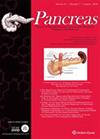疼痛性慢性胰腺炎患者胰腺支架移除后疼痛复发的风险因素和预测模型。
IF 1.7
4区 医学
Q3 GASTROENTEROLOGY & HEPATOLOGY
引用次数: 0
摘要
目的内镜下胰腺支架植入术(EPS)是治疗疼痛性慢性胰腺炎的有效方法。然而,人们对导致支架取出后疼痛复发的因素知之甚少,而且没有明确的支架取出标准。我们旨在通过识别疼痛复发的风险因素来建立疼痛复发的预测模型。方法 我们回顾性地查看了本院在 2007 年 1 月至 2022 年 7 月间因疼痛首次使用单个塑料支架接受 EPS 的 95 例患者。采用单变量和多变量逐步Cox比例危险模型来确定疼痛复发的风险因素,并根据确定的因素建立了预测模型。结果 在95例入选患者中,89例(93.7%)疼痛缓解,73例(76.8%)支架拆除。在支架移除后随访时间≥6个月的69名患者中,有29人(42.0%)在中位随访59个月期间疼痛复发。血清脂肪酶水平(p = 0.034)和计算机断层扫描或磁共振成像显示的胰腺实质厚度(p = 0.022)被确定为疼痛复发的独立风险因素。结论我们确定了支架取出后疼痛复发的风险因素,并建立了一个新的预测模型。该模型可能有助于胰腺支架治疗的决策,如决定是移除胰腺支架、继续使用 EPS 还是转为手术治疗。本文章由计算机程序翻译,如有差异,请以英文原文为准。
Risk factors and a prediction model for pain recurrence after pancreatic stent removal in painful chronic pancreatitis.
OBJECTIVES
Endoscopic pancreatic stenting (EPS) is an effective treatment modality for painful chronic pancreatitis. However, little is known about the factors that cause pain recurrence after stent removal, and there are no clear criteria for stent removal. We aimed to develop a prediction model for pain recurrence by identifying its risk factors.
METHODS
We retrospectively reviewed 95 patients who underwent EPS due to pain for the first time using a single plastic stent between January 2007 and July 2022 at our institute. Univariate and multivariate stepwise Cox proportional hazards models were used to identify the risk factors for pain recurrence, and a prediction model was developed based on the identified factors.
RESULTS
Of the 95 enrolled patients, 89 (93.7%) achieved pain relief and 73 (76.8%) did stent removal. Of the 69 patients with a follow-up period ≥6 months after stent removal, 29 (42.0%) had pain recurrence during the median follow-up period of 59 months. Serum lipase level (p = 0.034) and pancreatic parenchymal thickness (p = 0.022) on computed tomography or magnetic resonance imaging were identified as independent risk factors for pain recurrence. The prediction model based on the identified factors had good discrimination ability, with a concordance index of 0.74, and could stratify pain recurrence rates.
CONCLUSIONS
We identified the risk factors and developed a new prediction model for pain recurrence following stent removal. This model might be useful for decision-making in pancreatic stent management, such as deciding whether to remove a pancreatic stent, continue EPS, or convert to surgery.
求助全文
通过发布文献求助,成功后即可免费获取论文全文。
去求助
来源期刊

Pancreas
医学-胃肠肝病学
CiteScore
4.70
自引率
3.40%
发文量
289
审稿时长
1 months
期刊介绍:
Pancreas provides a central forum for communication of original works involving both basic and clinical research on the exocrine and endocrine pancreas and their interrelationships and consequences in disease states. This multidisciplinary, international journal covers the whole spectrum of basic sciences, etiology, prevention, pathophysiology, diagnosis, and surgical and medical management of pancreatic diseases, including cancer.
 求助内容:
求助内容: 应助结果提醒方式:
应助结果提醒方式:


